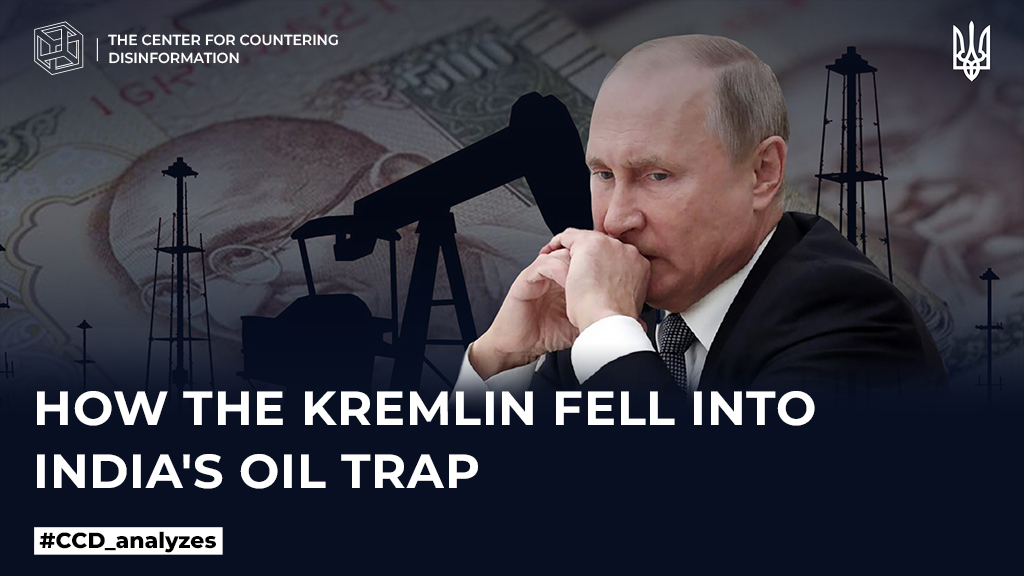As you know, russia’s military aggression against Ukraine led to a ban on sea imports of russian oil by the US and EU. This forced moscow to look for the alternative markets, mainly in Asia, where up to 80% of oil exports currently go.
☝️ The ministers of finance of the G7 and Australia introduced a price ceiling for russian oil aimed at reducing russia’s income and ending the war in Ukraine. The agreement provides for the refusal of the United States and the European Union to purchase oil, as well as the limitation of purchases for other countries at a price higher than the established ceiling of 60 dollars per barrel. Such oil cannot be insured and transported. The restrictions came into effect on December 5, 2022 for crude oil and on February 5, 2023 for refined petroleum products. russia said it will not keep that limit, even if it has to cut production.
In order to at least somehow restrain the fall in revenues from oil and gas exports, the kremlin used the mechanism of dumping prices and calculations in national currencies – rubles and the national currency of the importing country.
One of the countries that was tempted to buy cheap oil from moscow was India. With the help of discounts, russia convinced India not to accept the price ceiling and continue to buy oil from it. The discounts are really impressive – for India, which usually bought russian oil at a price of $110 per barrel, the dumping price was $32-35. It is not surprising that at the end of the year, the supply of russian oil to India increased 33 times (almost 1.5 million barrels per day, which allows India to cover 85% of its needs with russian oil).
However, it turned out that the advertised plan to abandon the dollar settlement led to an “unexpected” problem – the rupees received for the sale of energy goods to Indian counterparties have nowhere to go. russian exporters have accumulated Indian currency, but the Indian regulator does not allow it to be traded on the moscow stock exchange and converted into rubles.
This is due to the fact that Indian currency regulation restricts circulation and settlements in rupees outside India. Using rupees directly to import Indian goods to russia also turned out to be difficult, because trade mainly goes in one direction – to India. So, India imports $4-5 billion worth of goods from russia a month, and the export of Indian products to russia is estimated at only hundreds of millions. As a result, a gigantic trade imbalance was formed, as a result of which russian banks began to massively refuse to receive rupees. Similarly, the Indian side does not want to use rubles instead of rupees, because there is no fixed exchange rate for this currency.
The moscow stock exchange is waiting for the decision of the Central Bank of India on the expansion of the internationalization of the rupee, but so far the issue is “hanging”. Although the Indian Central Bank approved the opening of rupee accounts to russian banks in June of last year, no major transactions are being conducted. Attempts by russian officials to agree with the Indian authorities on a list of 500 goods that India could sell to the russian federation (pistons, oil pumps, ignition coils, bumpers, equipment for the textile industry, and almost 200 goods for metallurgy) also failed.
In such conditions, Indian refineries are increasingly using United Arab Emirates dirhams, which are pegged to the dollar, to pay for some supplies of russian oil to circumvent Western sanctions. Thus, the currency of the UAE is becoming popular for russian oilmen as well.
Attempts by the russian authorities to gradually reduce oil discounts for a few buyers are doomed to failure, as the largest buyers of russian oil (India and China) understand the kremlin’s desperate situation and do not want to pay more. In addition, russia not only cannot get rid of huge discounts, but is also forced to reduce the price. In October 2022, Indian refineries bought Brent oil from russia at an average of $8 per barrel cheaper than before, in November — already by $10-11, in December the discounts reached $12-15, in January — $15-20.
At the same time, the income of russian oil producers from exports fell by 20% only in December 2022, and if we take the peak values of March last year, then by 41%.
It also turned out that India is increasing the purchase of oil from russia with significant discounts, after which Indian refineries prepare fuel for the US and EU markets. In January 2023 alone, India shipped 89,000 barrels of gasoline and diesel to the US daily (a record for the past 4 years), and 172,000 barrels of low-sulfur diesel fuel to Europe (the maximum result since October 2021). This actually nullifies the threat of the russian federation not to sell energy carriers to countries that have joined the capping of oil prices.
❗️That is, the oil embargo for the russian federation, on the one hand, provides the USA and the EU with russian oil products at reduced prices, and on the other hand, the collapse of the price of russian oil deprives russia of a significant part of the income to finance the war against Ukraine.










